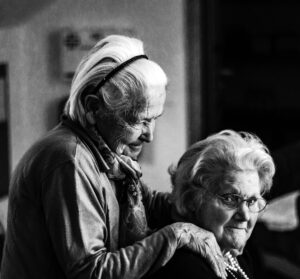A 25-member panel of experts in long-term care has written a report in which they propose “paving the path to a better future of assisted living.” The report, The Imperative to Reimagine Assisted Living, was published in the Journal of the American Medical Directors Association in February and is available through open access.
Having been closely involved in my father’s daily life in assisted-living communities for the past four years, announcement of the report immediately caught my attention. Recently—now that the COVID and staffing crises have lessened—I’ve been reflecting on my expectations for communication and shared-decision-making in the assisted-living setting. I’ve been writing about patient and family engagement in healthcare for many years while living in a parallel universe with Dad’s care.
The quality of Dad’s care has been OK-to-good, and I’ve been able to forge relationships with key staff members at the three communities where he’s been a resident. Dad’s current community distributes an annual family and resident satisfaction survey that appears to be important for the community’s standing within its larger corporate structure, and the director held informational Zoom calls during COVID surges. But there aren’t many opportunities for families to ask questions and give feedback, not to mention participate in planning.
I can navigate the system to get what Dad and I need, but that’s very different from working with an organization that prioritizes hearing directly from residents/patients and family members. Readers, if any of you are aware of long-term-care organizations that authentically engage the community—such places must exist!—please let me know in a comment below or by email.
Meanwhile, the report is full of good background and analysis of where we are with the assisted-living model and how we got here. It says the assisted-living model was originally conceived to provide “person-centered care and promote quality of life through supportive and responsive services to meet scheduled and unscheduled needs for assistance, an operating philosophy emphasizing resident choice, and a residential environment with homelike features.”
As much as the report acknowledges a foundation of resident choice and personalized care in assisted living, there appears to be no resident or family representatives or patient advocates among the 25 panel members, and the recommendations do not include direct resident or family engagement in planning or decision-making. Even with limited opportunities for direct engagement, I have found my involvement in Dad’s communities to be rewarding for both of us. It’s frustrating, however, to imagine what else might be possible with a different organizational structure and mindset.





